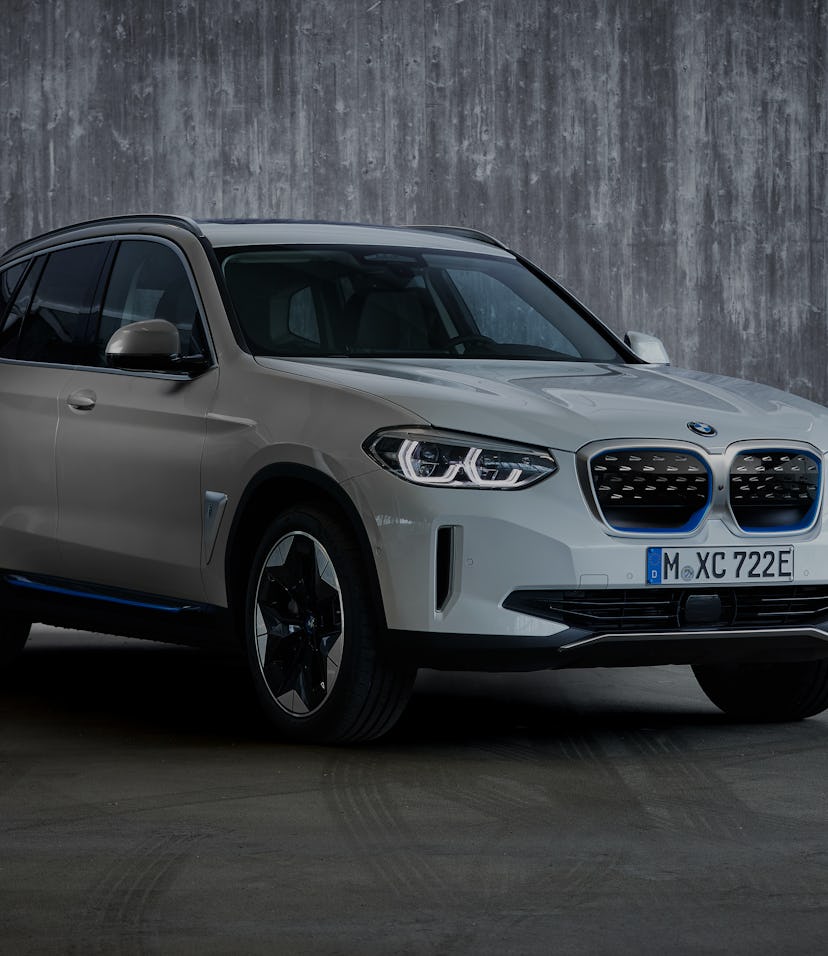Design
The all-electric iX3 is BMW's future but it looks like its past
The all-electric compact SUV will hit Chinese and European streets, but U.S. buyers wanting an electric Bimmer will have to make do with the older i3 for now.

Thanks to the braggart, Tesla, it's easy to forget BMW's got a long and storied history with EVs. The German automaker debuted the blue accents and "Born Electric" tagline with its unlikely pair of electric test cases, the compact, soccer-mom-styled, fully electric i3, and the futuristic, hybrid i8. Each got a few updates, but neither was destined for primetime. The iX3 unveiled today is that car. It's the crowdpleaser that will likely sell better than either of its predecessors... except in the U.S., where it won't be offered.
American dealers worried the range (around 200 miles) would put off U.S. buyers. Whether that's true or not, we'll never know. But despite no plans for a stateside launch, we'll be watching the iX3 with interest, because it's the first in BMW's extensive roadmap of EVs its got planned for coming years. It's also the first vehicle to roll off a Chinese production line for export, and its the first to include BMW's new artificial "IconicSounds Electric" soundscape developed with composer Hans Zimmer that'll be the standard in the company's upcoming EV lineup.
The iX3 is a hint at the future, but it isn't the future. It takes components that will be key to BMW's electric ambitions — drivetrain, electric motor, battery and charging tech, and other in-house innovations — and sandwiches them into what looks like a regular, gas-guzzling X3, aside from the ultra-low-drag alloy wheels, lower clearance, and obligatory blue trim to let us know this is a BMW you plug in, rather than fill up.
Vital statistics — The iX3 houses the fifth-generation of BMW's eDrive electric motor. It produces 210 kW (286 hp) and peak torque of 400 Nm. That's only going to get you from 0 to 60 mph in around 6.8 seconds, and the top speed is electronically limited to 112 mph. That's much slower than a Tesla but comparable to another German automaker's forthcoming plug-in compact SUV, Audi's Q4.
The 80 kWh battery (74 kWhs of which is useable) supports chargers up to 150 kW. Assuming you can find that sort of rapid charger, that translates to an 80% charge in 34 minutes or an additional 60 miles of range in 10 minutes. For European buyers, that's likely enough for a weekend, cross-border jaunt, especially considering the prevalence of charging infrastructure on the continent.
Those numbers are respectable, but not thrill-inducing. Similarly uninspiring is the €69,995 (roughly $80,000, not allowing for subsidies which could bring the price down, or duties that could push it up). But then, no one buys a BMW because it's the most affordable option in its class.
Electric is now cool — The i3 and i8 were pioneering vehicles, not just for BMW, but because they arrived in what was a relatively nascent EV sector. Today, Tesla is the most valuable carmaker on the planet, and every leading car company has some sort of EV strategy. Charging infrastructure is expanding rapidly, shrinking range anxiety — one of the last serious criticisms of EVs, alongside their initial cost — in the process.
U.S. buyers will have to wait until the i4 or iNext arrive next year to see if BMW's recent investments in electric motoring have paid dividends. For EV fans, that's disappointing. But at least those cars, unlike the iX3, will look like BMW's future and not just tease us with slivers of it.